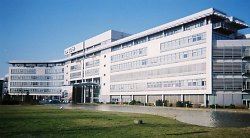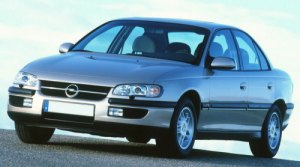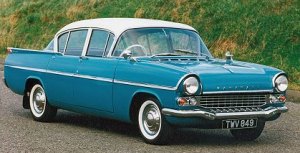

| - |
 Headquarters
and
R&D
center: Rüsselsheim, Germany.
Headquarters
and
R&D
center: Rüsselsheim, Germany. Vauxhall HQ: Luton, UK.
Main assembly plants:
Germany: Eisenach (Adam, Corsa), Russelsheim (Insignia, Zafira).
UK: Ellesmere Port (Astra), Luton (Vivaro)
Spain: Zaragoza (Corsa, Meriva, Mokka, Crossland X)
Poland: Gliwice (Astra, Cascada)
2017 production: 1,117,331 units
2016 production: 1,206,175 units
2015 production: 1,139,478 units
2014 production: 1,114,792 units
2013 production: 1,057,000 units
2012 production: 926,778 units
2011 production: 1,277,949 units
2010 production: 1,253,014 units
Opel / Vauxhall sales in Europe:
2016: 1,158,340 units
2015: 1,112,209 units
2014: 1,076,243 units
2013: 1,040,707 units
2012: 1,049,897 units
2009: 1,209,121 units
2008: 1,458,290 units
2007: 1,630,830 units
2006: 1,563,196 units
2018 sales by models:
Karl: 48,201 units
Adam: 45,600 units
Corsa: 235,639 units
Meriva: 2,519 units
Astra: 181,661 units (+ 1,974 Cascada)
Zafira: 30,324 units
Insignia: 71,341 units
Mokka: 118,487 units
Crossland X: 102,424 units
Grandland X: 79,976 units
Vivaro: 64,543 units
Reference:
http://media.opel.com/media/intl/en/opel/company.html
Under the strategy of GME, Opel and Vauxhall are twins company. Their cars are the same except the badges. All are designed and engineered in Rüsselsheim by Opel, although some cars are produced in Vauxhall's factory. Because the Vauxhall brand has a long history and is still well recognized by the British, GM keeps it for serving the UK market.
Opel was founded by Adam Opel and his family in 1863 as a manufacturer of sewing machines and later on bicycles. In 1899, it expanded into automobile production through licensing. A new factory was built at Russelsheim, which remains to be the company’s headquarters today.
The first car designed by their own appeared in 1902, but until 1906 they built just 1000 cars of all kinds. A breakthrough was made in 1909 with the Opel 4/8 hp model, which was modest but reliable and cheap. The success of this model, combined with improved production system, meant that by 1914 Opel had become the largest German car maker.
In 1924, Opel was the first German car maker to introduce American-style mass production system. This helped it to regain the top spot of German sales chart in 1928, when 43,000 cars were sold. Also because of its modern facility, it caught the attention of General Motors and was acquired by the latter in 1929. GM did not intervene its product development and operation, but its financial support helped Opel to push its sales to 121,000 cars in 1936, letting it to overtake the bankrupted Citroen to become the largest car maker in Europe.
 1993 Opel Omega - the last big Opel
1993 Opel Omega - the last big OpelGM lost control of its German subsidiary during WWII. The Nazi government used it to produce military trucks and aero engines, so the Russelsheim factory was bombed and damaged. After the war, it went under GM again and, thanks to its American link, it the first German car maker to be rebuilt. By 1953, its output rose back to above 100,000 units.
During 1950s and 1960s, Opel concentrated on making middle-class cars priced between Volkswagen and Mercedes. This caught the demand of the ever growing middle class people. Then it went down market with Kadett (which would evolve to Astra) in the mid-60s and the mini car Corsa in the early 80s, increasing its sales volume further. Although popular, the cars of Opel were mostly conventional and hardly class-leading, therefore few could be considered as classic. In the mid-1990s, its large cars were seriously threatened by the ever growing premium brand Mercedes, BMW and Audi. Following the demise of Omega, Opel completely withdrew from large car / executive car segment.
Vauxhall
Vauxhall was founded by Alex Wilson in 1857 as a maker of pumps and marine engines. The company built its first car, a very simple "horseless carriage", in 1903 and then moved to a new factory in Luton to start automobiles production. The early Vauxhall concentrated on building touring and sporting cars in small scale. Although it was quite well known in Britain, it was largely unknown overseas.
Things changed when General Motors bought it in 1925. Vauxhall started producing affordable cars in 1930 and saw its output rose to 26,000 cars in 1935. The Second World War turned its Luton factory to produce tanks and military trucks (under Bedford name). After which civilian production resumed based on the pre-war designs. By 1953, the British arm of GM was producing 100,000 cars a year, the same as Opel in Germany.
 1957 Vauxhall Velox with America influence
1957 Vauxhall Velox with America influenceAll new products finally arrived in 1957 with the new Victor and Velox. They had full-width bodyshell and styling heavily influenced by its American parent (with wrap-around windscreen, long boot and tail fins for example). This also enabled them to be exported to the USA and Canada.
However, the cars of Vauxhall started integrating with Opel's in the mid-1960s. The Viva of 1963 was derived from Opel Kadett. This trend continued with the 1975 Chevette (Opel Kadett) and Cavalier (Opel Ascona). By late 1970s, all the Vauxhall mainstream models had merged with Opel models. Losing its own R&D, Vauxhall became merely a production and sales unit of GM Europe.
In 2017, following sales of making losses, GM finally sold Opel/Vauxhall to PSA of France.